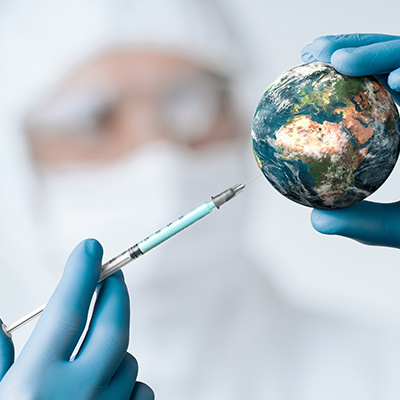November 19, 2021 -- Vaccine R&D and manufacturing face many challenges despite the success of COVID-19 vaccines. This is according to a new U.S. Government Accountability Office (GAO) report. The GAO is an independent agency charged with preparing reports for Congress.
Published earlier this month, the report, "Vaccine Development: Capabilities and Challenges for Addressing Infectious Disease," reviews the technologies available to advance vaccine development and production. The report also suggests improvements that can be made to the vaccine development process. Examining how the federal government can further support these efforts, the report makes four specific public policy recommendations:
- Prioritize infectious disease pathogens.
- Improve preparedness.
- Further improve the development of data standards.
- Evaluate factors that inhibit vaccine investment and mechanisms to increase it.
Estimates put vaccine development, defined as preclinical studies to early clinical safety testing and efficacy tests, at a cost range of $31 million to $68 million. Vaccine candidates face low odds of success in clinical trials -- the failure rate of vaccines in clinical trials is estimated to be 67%. The Johns Hopkins University Center for Health Security has stated that among the six of the 24 viruses capable of human infection, one is likely to cause the next pandemic.
The GAO report names four technologies that could advance the development of vaccines. These technologies include:
- Omics
- Reverse vaccinology
- Next-generation vaccine platforms
- Routes of vaccination
In the case of reverse vaccinology, by employing computer simulations and analysis, reverse vaccinology can more quickly identify vaccine antigen candidates. Each technology platform faces a shared group of challenges that include technology limitations, the need for complex and costly instrumentation, and the requirement for highly trained personnel. Although they are not vaccines, monoclonal antibodies are also highlighted in the GAO report as possibly providing shorter-term protection.
The report also highlights specific technologies that may contribute to the future of vaccine testing by addressing one or more of the key issues, which include safety monitoring, recruiting and retaining trial participants, costs, and demonstrating efficacy. These technologies are:
- Organ chips
- Artificial intelligence and machine learning
- Electronic health records
- Common control groups
- Standardized assays
- Virtual clinical trials
- Wearable devices
One benefit cited by the GAO that standardized assays provides is the creation of common protocols for vaccine testing, including protocols for common control groups. However, these technologies are also characterized by hinderances, such as limited technology development, privacy concerns, lack of data standards, and stakeholder disagreements on approaches.
As with vaccine R&D, new manufacturing approaches promise solutions for improving infectious disease vaccines. The report identifies five technological solutions, including:
- Single-use systems
- Molecular bioprocessing systems
- Cell-free synthesis
- Process optimization
- Continuous manufacturing systems
These solutions could address the production, purification, and fill stages of vaccine manufacturing by increasing flexibility and speed. For example, process optimization promotes optimized cell lines and growth factors, as well high-density cell growth. Technology limitations, high costs, the need for highly trained personnel, and business risks are factors limiting further advancement of these technologies.
Beyond technologies, the GAO report identifies other factors in limiting vaccine development such as market failures, imperfect information, uncertain demand, and cost-to-success ratio. In the case of imperfect information, the report mentions that drug developers do not know a person's likelihood of acquiring a particular infectious disease, thus development of therapeutics rather than vaccines is a safer investment. To combat these roadblocks, the report suggests government-based incentives for vaccine development.
Tanya Samazan is managing editor of Instrument Business Outlook, a twice-monthly newsletter aimed at providing decision-makers with the latest and most complete information available on the life science and analytical instrument industry.
Disclosure: ScienceBoard is a sister company of IBO.
Do you have a unique perspective on your research related to vaccines? Contact the editor today to learn more.
Copyright © 2021 scienceboard.net








